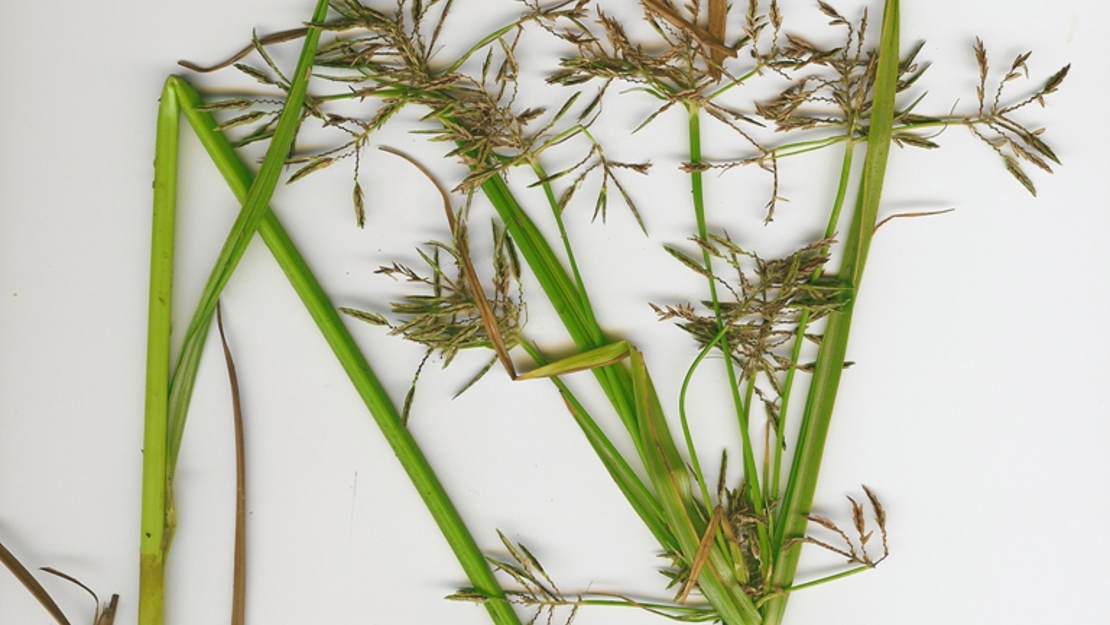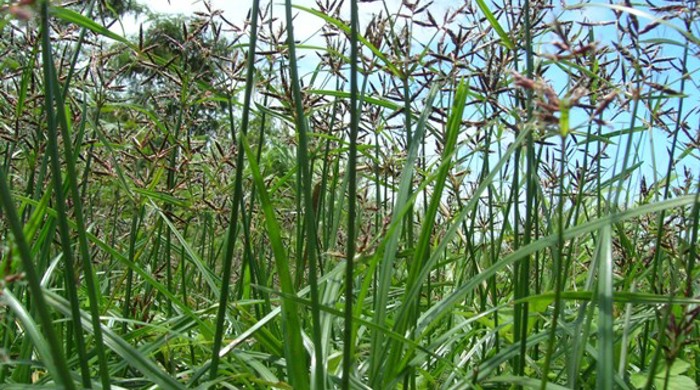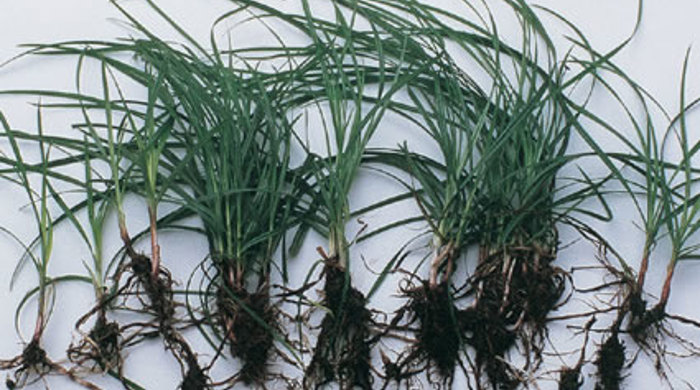Cyperus rotundus
Nutgrass
Also known as:
Purple nut sedge
Family: Cyperaceae
Origin: India

Regional Pest Management Plan (RPMP) status
- Whole region — Sustained control
- Hauraki Gulf Controlled Area Notice pest
General description
Erect perennial rush < 35 cm tall. Rhizomes are extensive and tuberous. Stems are triangular. Flowers are borne in simple open umbels with few rays. Nuts are small and rarely reach maturity.
What you need to know
To help protect our environment:
- You must not breed, distribute, release or sell nutgrass within the Auckland region.
- You must not plant nutgrass within the Auckland region, unless you are transferring an existing plant on your land to another location within the boundaries of the same property.
- You must destroy any nutgrass on land that you occupy if it has been planted in breach of the above rules and you are directed to do so by an authorised person.
Habitats
Pasture, roadsides, wetlands, riparian margins, coastal areas, cropland, urban habitats.
Dispersal
Low production of viable seed. Vegetative spread from rhizomes and tubers, dispersed by water. Human-mediated dispersal through movement of contaminated soil.
Impact on environment
Potential to outcompete native species in wetlands, riparian margins and coastal areas. Reduces crop yields. May hybridise with the closely related C. ustulatus.
Control
Site Management
Follow up treated areas 3 times per year. Encourage natural regeneration of native plants or replant treated areas where possible after 2-3 treatments to establish dense ground cover and minimise reinvasion.
Recommended approaches
Physical control
Method: Dig out.
Plant parts requiring disposal: Tubers and rhizomes.
Disposal options: Remove to greenwaste or landfill if practical.
Biocontrol
Biocontrol is currently not available for this species.
Community agrichemical control recommendations
No qualifications: Foliar spray with 200ml glyphosate green per 10L of water.
Basic Growsafe certified: Foliar spray with 200ml glyphosate green per 10L of water and 20ml penetrant.
Certified Handler/Experienced agrichemical user: Follow up treated areas 3 times per year. Encourage natural regeneration of native plants or replant treated areas where possible after 2-3 treatments to establish dense ground cover and minimise reinvasion.
Caution: When using any herbicide or pesticide please read the label thoroughly to ensure that all instructions and safety requirements are followed.





